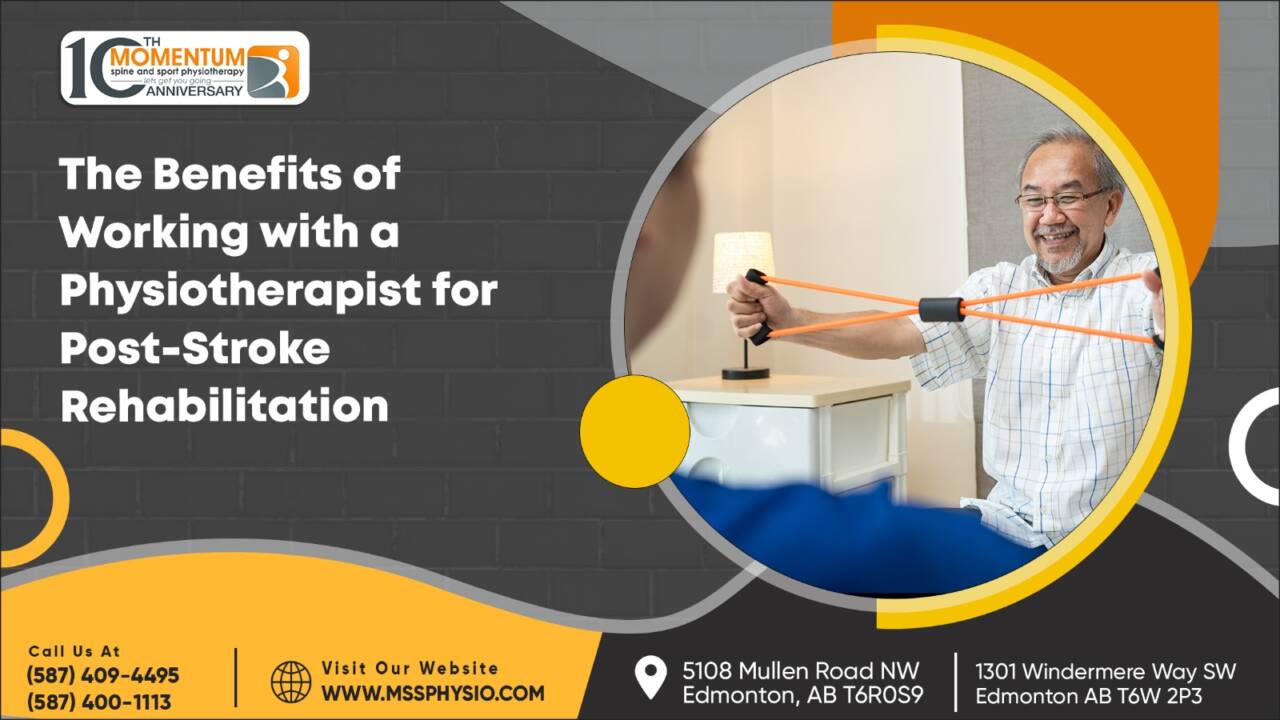HEALTH
The Benefits of Working with a Physiotherapist for Post-Stroke Rehabilitation

Recovering from a stroke will be a challenging journey, one that often requires specialized care to regain lost functions and improve one’s life. Physiotherapy in Edmonton plays a vital role in post-stroke rehabilitation, offering tailored therapies designed to address the unique needs of each patient.
In Edmonton, physiotherapy at quality facilities, known for their comprehensive approach, focuses on restoring mobility, strength, and independence through various therapeutic exercises and techniques. This focused rehabilitation not only aids in physical recovery but also boosts confidence and mental resilience, crucial aspects for those navigating the complexities of post-stroke rehab. Engaging with a skilled physiotherapist can significantly enhance the recovery process, making it possible for stroke survivors to achieve their maximum potential in regaining function.
1. Personalized Rehabilitation Programs
- Tailored to Individual Needs: Each stroke patient experiences different deficits, ranging from mild weakness to severe paralysis. A physiotherapist in Edmonton will conduct a thorough assessment to create a personalized rehabilitation program that addresses the specific areas affected by the stroke. This could include exercises to improve muscle strength, coordination, balance, and functional mobility.
- Progress Tracking: Regular sessions with a physiotherapist allow for continuous monitoring of progress. Adjustments to the rehabilitation plan are made based on the patient’s improvements or any new challenges that arise, ensuring the therapy remains effective and relevant.
2. Improvement in Physical Function
Restoring Mobility
The primary goal of these interventions is to enhance the patient’s functional independence. Improvement in mobility facilitates critical daily activities such as walking, sitting, standing up from a seated position, and maintaining balance while moving.
Techniques Used
- Strength Training: Targeted exercises are designed to build muscle strength, which is crucial for supporting weakened limbs and improving overall stability. These exercises often focus on major muscle groups affected by the stroke and may involve the use of weights or resistance bands.
- Range of Motion Exercises: These exercises are to increase flexibility and the range of movement in joints that may have become restricted post-stroke. Techniques such as passive stretching, where the physiotherapist assists the patient in stretching exercises, and active exercises that the patient performs independently are commonly employed.
- Neuromuscular Re-education: This technique focuses on retraining the nervous system to improve the coordination and timing of muscle responses. Activities include balance exercises, coordination drills, and gait training using treadmills or other assistive devices to relearn walking and other movements.
Reducing Spasticity
The main objective is to alleviate the symptoms of spasticity, thereby reducing pain, improving muscle function, and preventing permanent muscle shortening and joint deformities. These improvements can optimistically impact the life quality of a stroke survivor.
Techniques Used
- Stretching Exercises: Regular stretching helps to maintain muscle length, reduce stiffness, and prevent contractures. Physiotherapists may guide stroke survivors through a series of stretches targeting affected muscles and limbs.
- Strengthening Routines: These are aimed at building strength in muscles that may be underused due to spasticity. Strengthening antagonist muscles can help balance muscle tone and reduce the dominance of spastic muscles.
- Use of Special Equipment: Devices like splints or braces may be used to maintain muscles and joints in the correct position. Electrical stimulation devices may also be used to reduce muscle tightness and improve function.
3. Enhancement of Neuroplasticity
The overarching goals of enhancing neuroplasticity are to recover as much lost function as possible, improve the adaptability of the brain, and integrate cognitive and sensory functions with physical movements. This holistic approach aims to not only improve physical abilities but also enhance cognitive and sensory processing, which are often impacted by a stroke.
Stimulating Brain Recovery
- Role of Physiotherapy: Physiotherapy interventions are designed to activate neuroplasticity, the brain’s capacity to rewire itself and form new neural connections. By performing repetitive and targeted physical exercises, patients can help re-establish pathways that were damaged by the stroke.
- Rehabilitation Exercises: These might include task-specific exercises such as reaching, grasping, or walking drills that encourage the brain to adapt and improve the control of these movements.
Cognitive and Sensory Integration
- Integration Techniques: These involve combining physical tasks with cognitive tasks, such as walking while counting backwards or naming objects. Such dual-tasking activities help integrate cognitive and sensory functions with physical movements.
- Sensory Retraining: Activities designed to improve the perception of touch, pressure, and proprioception are included in therapy sessions. Sensory retraining might involve exercises like identifying objects by touch or texture or balance training on various surfaces to enhance sensory feedback.
Psychological Benefits
- Boosting Confidence: The physical improvements observed during physiotherapy sessions can significantly boost a patient’s confidence and motivation. This psychological uplift is crucial as it encourages continued effort and participation in the rehabilitation process.
- Reducing Depression and Anxiety: Regular physical activity and structured exercise provided by clinics offering physiotherapy in Edmonton can help alleviate symptoms of depression and anxiety, which are common among stroke survivors. The supportive environment and positive reinforcement from a therapist can make a significant difference in mental health.
Embracing a New Chapter of Recovery
Momentum Physiotherapy offers post-stroke rehab for those seeking exceptional physiotherapy in Edmonton. At our physiotherapy clinic, a team of dedicated professionals works closely with stroke survivors, employing a range of tailored therapies designed to restore function and enhance quality of life.
If you or a loved one are on the path to recovery after a stroke, finding a “physiotherapist near me” can be a significant step forward. Take the next step in your recovery journey by reaching out to Momentum Physiotherapy. With our focus on comprehensive post-stroke rehab, we are equipped to help you regain independence and move towards a fuller, more active life.
Harper Harrison is a reporter for The Hear UP. Harper got an internship at the NPR and worked as a reporter and producer. harper has also worked as a reporter for the Medium. Harper covers health and science for The Hear UP.










